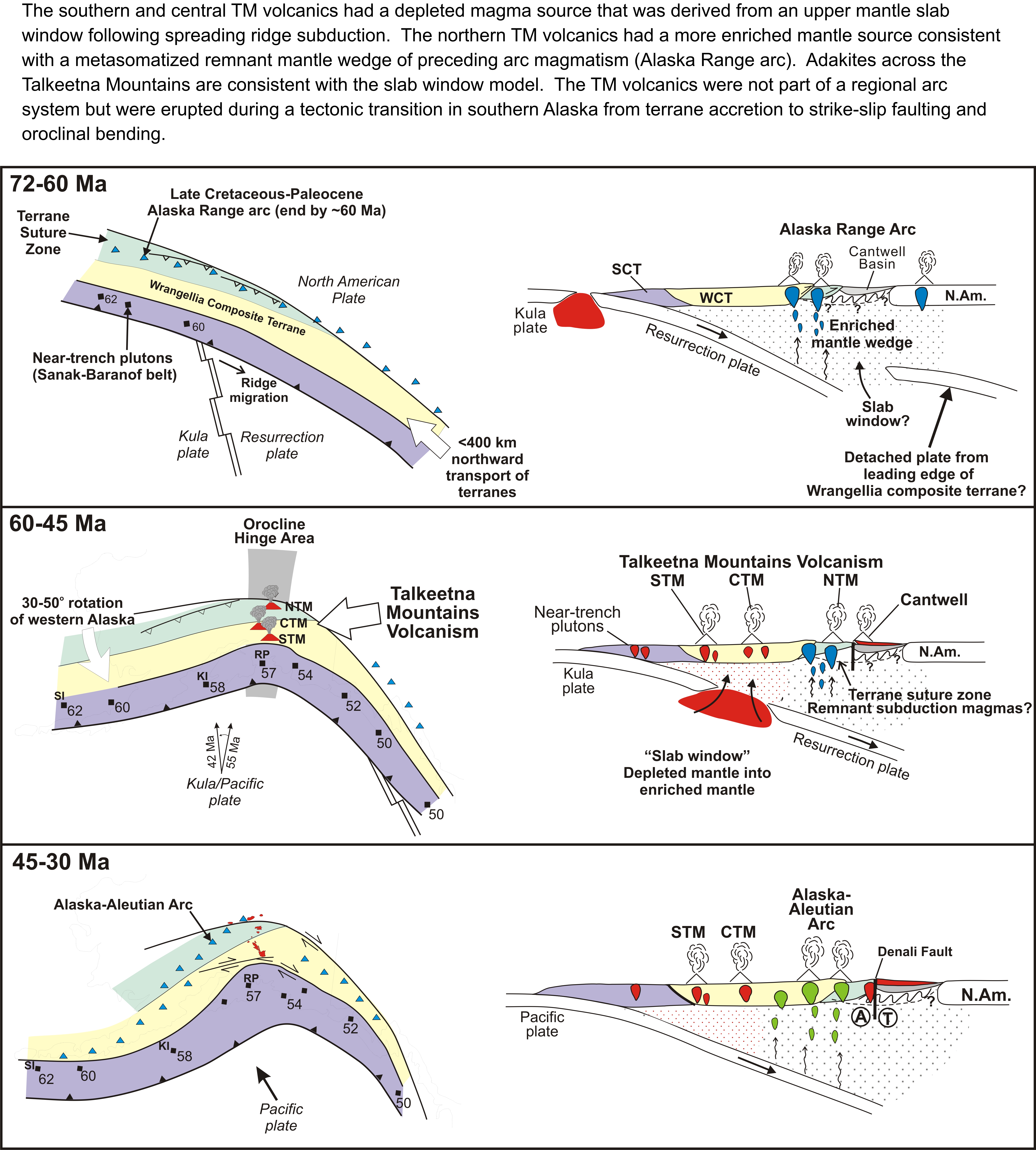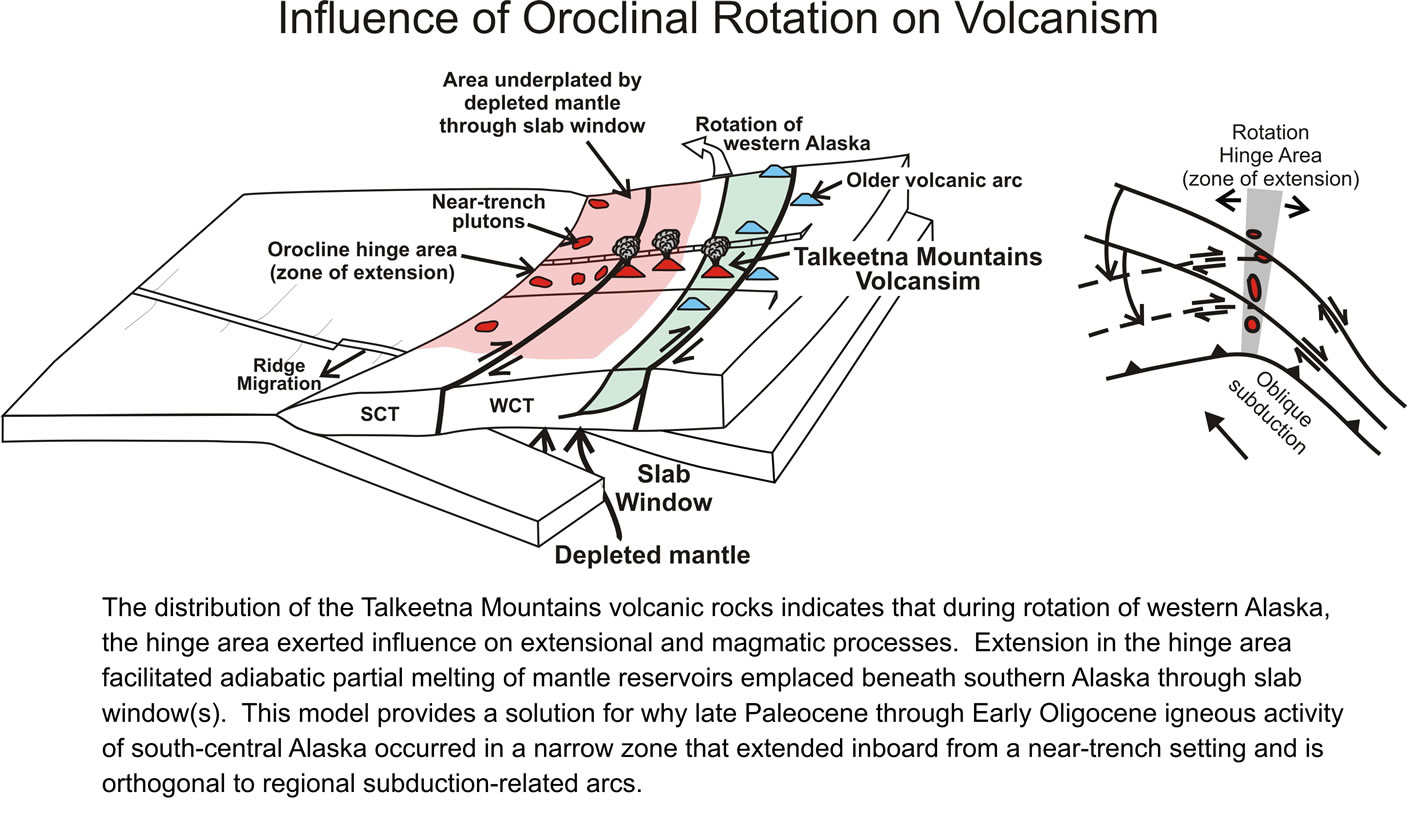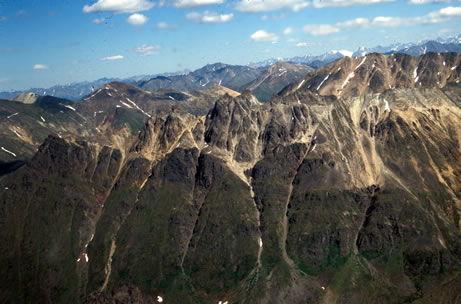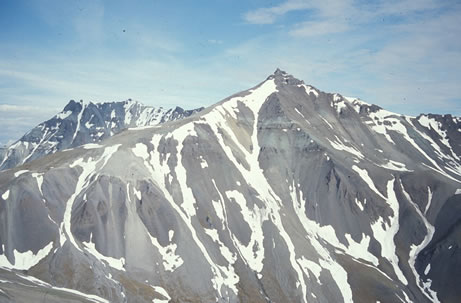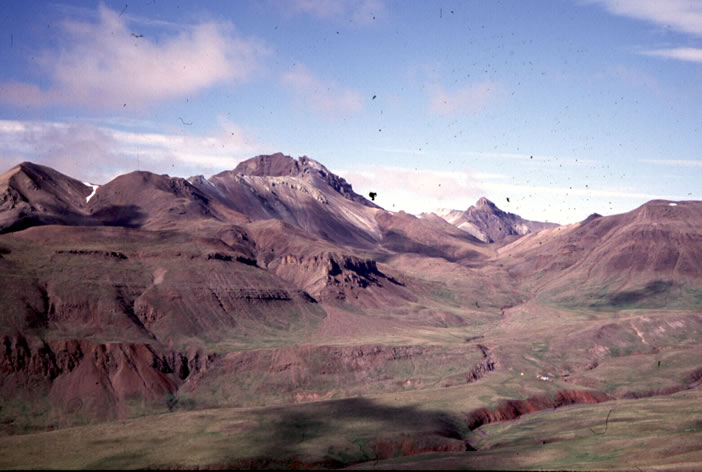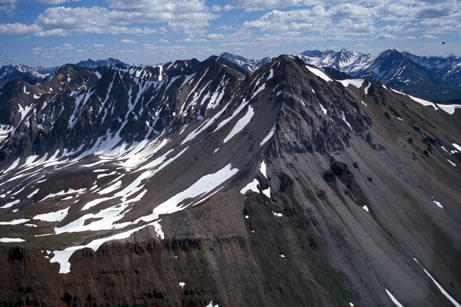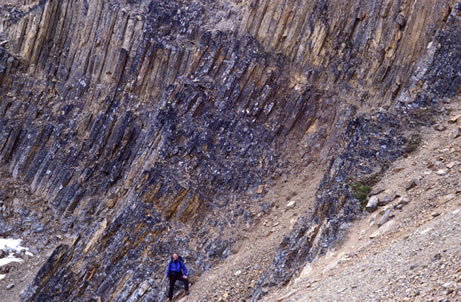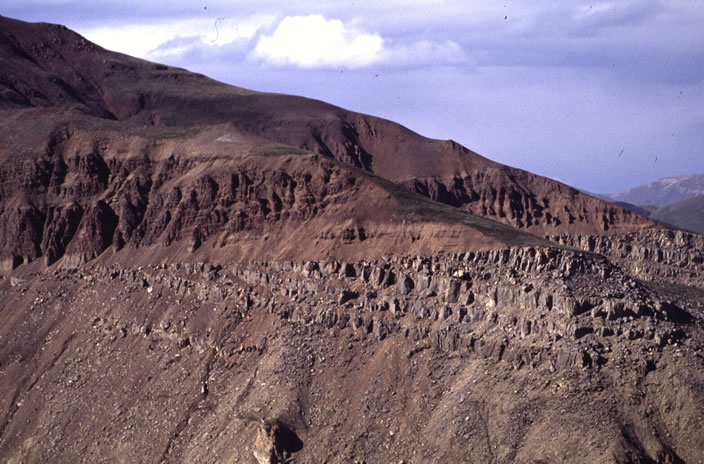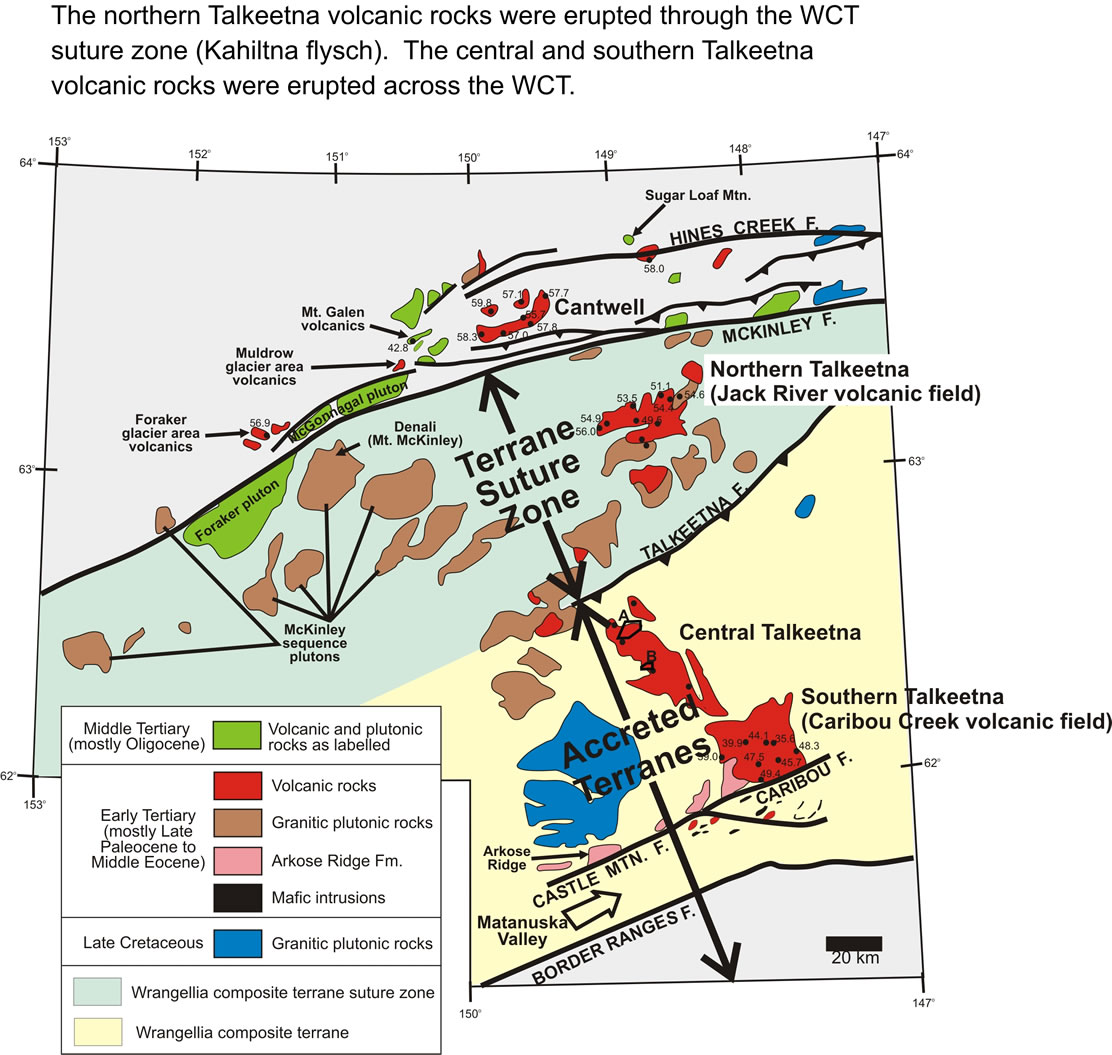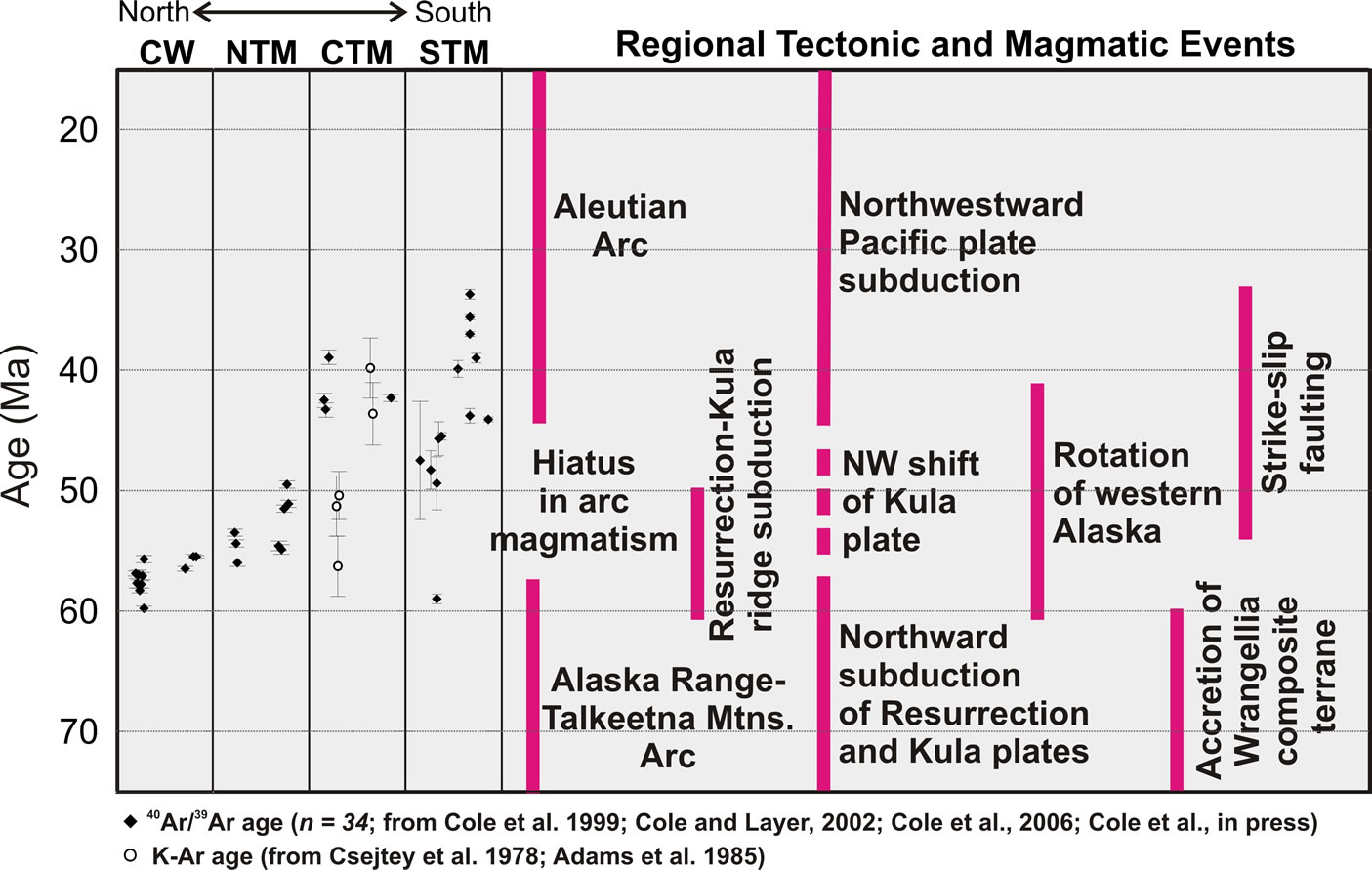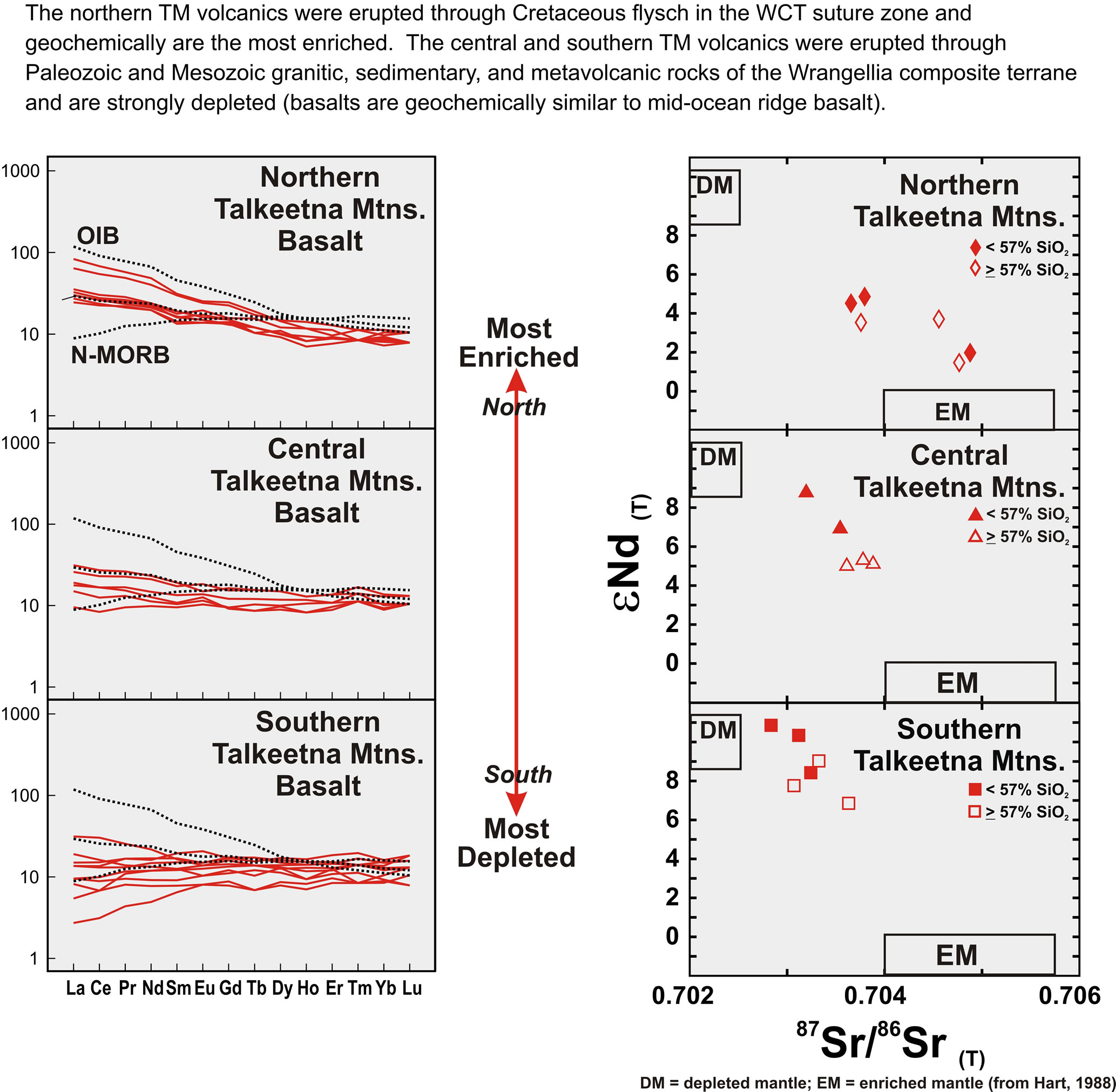Project Synopsis
Collaborators:
Dr. Paul Layer, University of Alaska, Fairbanks – Ar/Ar geochronology
Dr. Brian Stewart, University of Pittsburgh – Nd, Sr isotope geochemistry
This project, started in 1997, involved a combination of field work (detailed mapping, measuring stratigraphic sections) and laboratory work (geochemical and radiometric age data). The study areas are three major Paleogene volcanic/plutonic fields that are located in the Talkeetna Mountains of south-central Alaska. The volcanic and plutonic rocks of the Talkeetna Mountains were erupted across the Wrangellia composite terrane (WCT) and it’s suture zone soon after it was accreted to southern Alaska. Even though WCT accretion was integral in Alaska tectonics, there are few models that integrate how terrane accretion, coupled with other important tectonic events (such as ridge subduction), influenced plate subduction and associated magmatism. Trace element and Nd- and Sr-isotopic data reveal a systematic trend among the Talkeetna Mountains volcanic rocks in which basalts are most depleted adjacent to the forearc region at the southern edge of the WCT (eNd = 8.4 to 10.8; 87Sr/86Sr = 0.7028 to 0.7032) and are more enriched at the northern, inboard, edge of the WCT (at the terrane suture zone) (eNd = 2 to 4.9; Sr87/Sr86 = o.7033 to 0.7049). A systematic south-to-north increase in La/Yb, Nb/Zr, and Ba/Zr is consistent with the Sr-isotope data. The age of the Talkeetna Mountains volcanic rocks (~56 to 34 Ma) spans a hiatus in arc magmatism in southern Alaska and so these rocks were not likely erupted as part of a regional arc system (there is an absence of margin-parallel magmatism from about 55 to 45 Ma). Instead, upon accretion of the WCT, the Talkeetna Mountains volcanics were erupted during a tectonic transition, when 72-56 Ma arc magmatism in south central Alaska ceased and the locus of arc magmatism shifted southward to form the Aleutian arc system. This may have been a response to break-off or roll-back of the subducting slab after terrane accretion. Also during the time of Talkeetna Mountains volcanism was the migration of a spreading ridge along southern Alaska which could also have caused the hiatus in regional arc magmatism. Geochemical data show that the northernmost Talkeetna Mountains volcanic rocks had a more enriched mantle source, consistent with the remnant mantle wedge of preceding arc magmatism. The southern and central Talkeetna Mountains volcanics had a more depleted source of magma consistent with derivation from an upper mantle slab window. The slab window could have formed in response to ridge subduction and/or slab break off upon terrane accretion. Talkeetna Mountains rocks with adakite characteristics are consistent with a slab window model; partial melting of the slab edges and/or melting of garnet-bearing crustal rocks of the WCT above a slab window could produce adakitic magmas. The locus of Talkeetna Mountains magmatism, in a north-trending zone that is oblique to the continental margin, may have been influenced by extension in the hinge area of rotation of western Alaska (which formed the southern Alaska orocline). Overall, the Talkeetna Mountains volcanic rocks provide a unique record of crust-mantle interactions during the plate kinematics that shaped the southern margin of Alaska.
